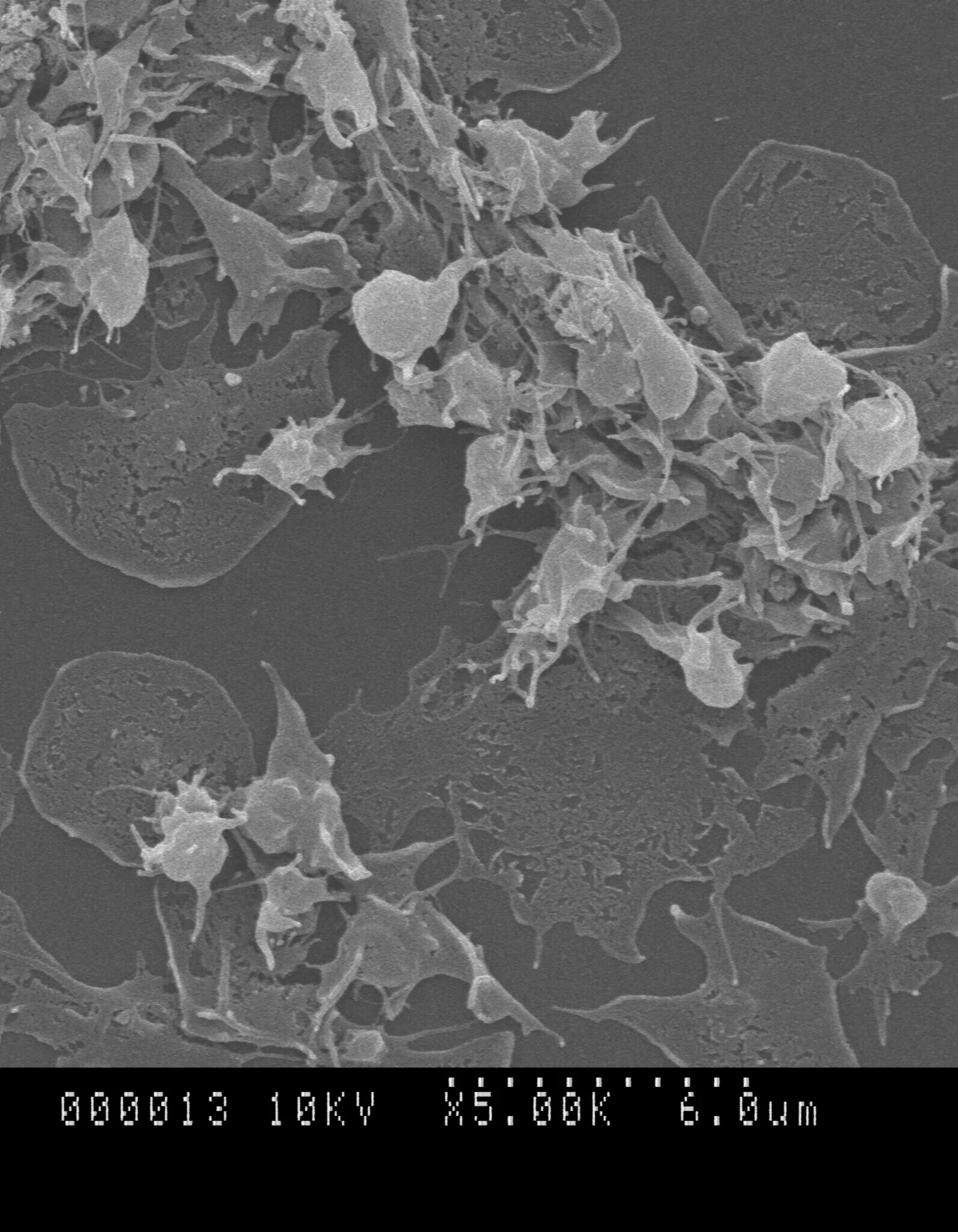Protein and Blood Interactions
Research under the “protein interactions with biomaterials” theme aims to better understand how a biomaterial’s surface properties lead to differential protein interactions, which allows us to construct biomaterial devices that have emergent regenerative properties. Upon implantation of a biomaterial into the body, one of the first events that occurs is adsorption of proteins from bodily fluids (such as blood and interstitial fluid) onto the biomaterial’s surface. The adsorbed protein layer regulates how the host’s cells and innate immune system respond to the biomaterial. Host responses that are being studied in the Santerre laboratory include blood coagulation, fibrosis, angiogenesis, bacterial adhesion and stem cell differentiation. The biomaterial’s properties (such as surface chemistry, morphology, topology, and stiffness) determine the adsorbed protein layer and subsequent host response. For example, the proteome secretions from human-derived macrophages post-exposure to a degradable polar hydrophobic ionic (D-PHI) polyurethane lead to higher levels of proteins associated with regeneration and lower levels of proteins associated with fibrosis when compared to two conventional reference materials. The Santerre laboratory is exploring how the biomaterial’s properties over its lifetime in the body can produce the desired host response for a specific application.
Select Publications :
Shrestha S, McFadden MJ, Gramolini AO, Santerre JP, Proteome analysis of secretions from human monocyte-derived macrophages post-exposure to biomaterials and the effect of secretions on cardiac fibroblast fibrotic character, Acta Biomaterialia, 111, 80-90 (2020) https://doi.org/10.1016/j.actbio.2020.04.042
Zhao S, Battiston KG, Santerre JP, Sequence-controlled polyurethane block copolymer displays differentiated immunoglobulin-G adsorption that influences human monocyte adhesion and activity, ACS Biomaterials Science and Engineering, 6, 4433-4445 (2020) https://doi.org/10.1021/acsbiomaterials.0c00496
Gossart A, Letourneur D, Gand A, Regnault V, Mlouka MAB, Cosette P, Pauthe E, Ollivier V, Santerre JP, Mitigation of monocyte driven thrombosis on cobalt chrome surfaces in contact with whole blood by thin film polar/hydrophobic/ionic polyurethane coatings, Biomaterials, 217 (2019) https://doi.org/10.1016/j.biomaterials.2019.119306
Gossart A, Gand A, Ollivier V, Boissiere M, Santerre JP, Letourneur D, Pauthe E, Coating of cobalt chrome substrates with thin films of polar/hydrophobic/ionic polyurethanes: characterization and interaction with human immunoglobulin G and fibronectin, Colloids Surf B Biointerfaces, 179, 114-120 (2019) https://doi.org/10.1016/j.colsurfb.2019.03.040
Gossart A, Battiston, KG, Gand A, Pauthe E, Santerre JP, Mono vs multilayer fibronectin coatings on polar/hydrophobic/ionic polyurethanes: Altering surface interactions with human monocytes, Acta Biomaterialia, 66, 129-140 (2018). doi.org/10.1016/j.actbio.2017.11.013

